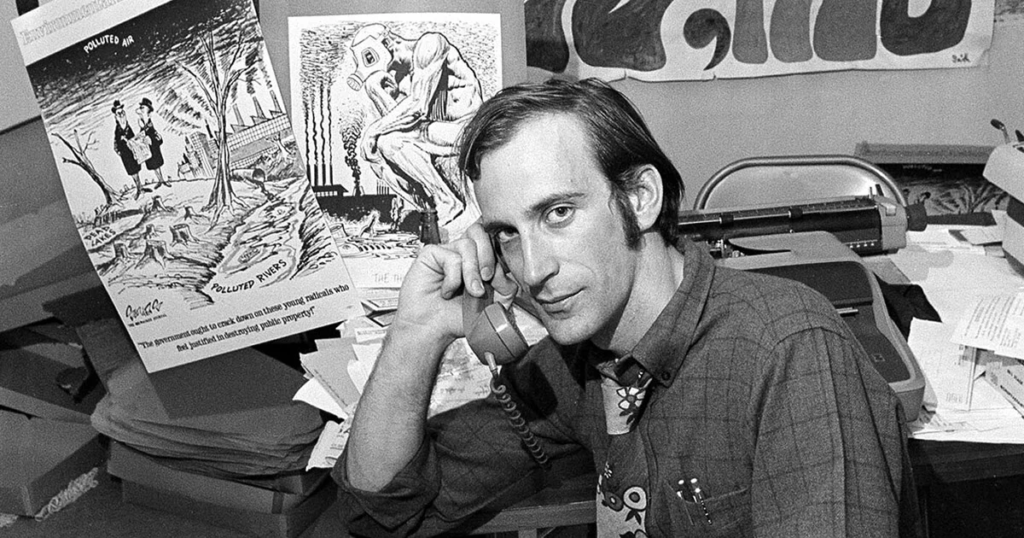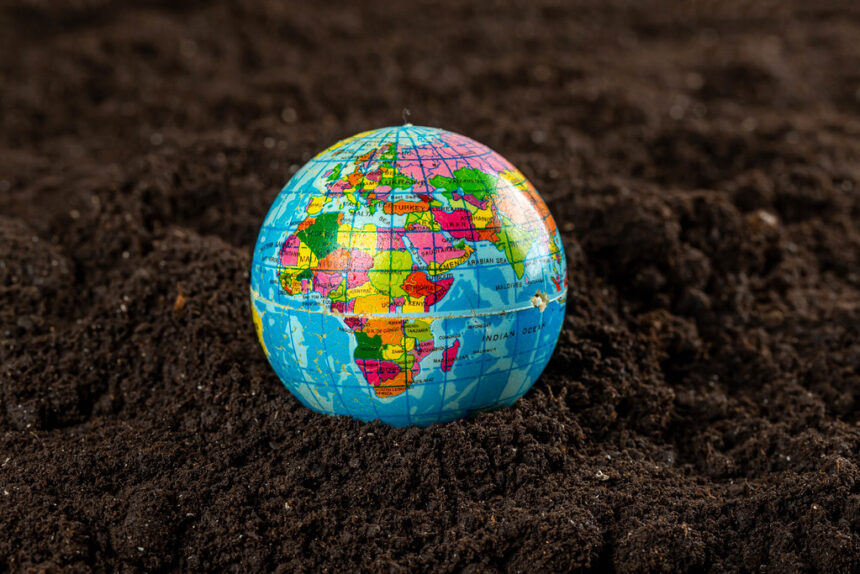THE ORIGINS OF EARTH DAY
Indeed, the decades leading up to the 1970s were marked by significant environmental degradation in the United States, driven largely by industrialization and the widespread use of fossil fuels. Leaded gasoline, which was commonly used in automobiles until it was gradually phased out starting in the 1970s, released lead into the atmosphere, contributing to air pollution and posing serious health risks, especially in urban areas.
During this time, industries operated with minimal regulations regarding pollution control, leading to significant emissions of pollutants into the air, water, and soil. The environmental movement in the United States began to gain traction in the 1960s and 1970s, largely in response to highly visible pollution events and growing concerns about the health and environmental impacts of unchecked industrial activity.
During this time, industries operated with minimal regulations regarding pollution control, leading to significant emissions of pollutants into the air, water, and soil. The environmental movement in the United States began to gain traction in the 1960s and 1970s, largely in response to highly visible pollution events and growing concerns about the health and environmental impacts of unchecked industrial activity.
In response to growing public pressure, the U.S. government passed several landmark environmental laws in the 1970s, including the Clean Air Act, the Clean Water Act, and the establishment of the Environmental Protection Agency (EPA). These laws aimed to regulate pollution, protect natural resources, and promote environmental sustainability.
Overall, the 1970s marked a turning point in American attitudes toward the environment, as awareness grew about the interconnectedness of human health, environmental quality, and economic prosperity. While significant progress has been made in addressing environmental challenges since then, ongoing efforts are needed to address emerging issues such as climate change and biodiversity loss.
However, the stage was set for change with the publication of Rachel Carson’s New York Times bestseller Silent Spring in 1962. The book represented a watershed moment, selling more than 500,000 copies in 24 countries as it raised public awareness and concern for living organisms, the environment and the inextricable links between pollution and public health.
More On Gaylord Nelson And Denis Hayes
THE IDEA FOR THE FIRST EARTH DAY
1. Senator Gaylord Nelson


Senator Gaylord Nelson’s experience witnessing the devastating oil spill in Santa Barbara in January 1969 was indeed a pivotal moment that fueled his passion for environmental conservation. The spill, which occurred when an offshore oil rig malfunctioned, released an estimated 3 million gallons of crude oil into the ocean, causing widespread environmental damage to marine life and coastal ecosystems.
Inspired by the growing environmental consciousness of the time, as well as the activism of the student anti-war movement, Senator Nelson saw an opportunity to mobilize public awareness and action around environmental issues. Drawing on the success of student protests, he envisioned a similar grassroots movement focused on environmental conservation.
Senator Nelson’s idea for a nationwide teach-in on college campuses was a groundbreaking concept aimed at educating and engaging students and the public on environmental issues. By leveraging the media and enlisting the support of individuals like Congressman Pete McCloskey, who shared his commitment to conservation, Senator Nelson sought to harness the energy of the emerging environmental movement and channel it into meaningful action.
The result was the first Earth Day, held on April 22, 1970. Millions of Americans participated in rallies, demonstrations, and educational events across the country, calling for greater environmental protections and urging government action. Earth Day 1970 marked a turning point in American environmental policy, leading to the passage of key legislation such as the Clean Air Act, the Clean Water Act, and the establishment of the Environmental Protection Agency.
Senator Gaylord Nelson’s vision and leadership played a crucial role in catalyzing the environmental movement in the United States and raising awareness about the importance of environmental conservation for future generations.
2. Denis Hayes


Yes, Denis Hayes played a key role in organizing the first Earth Day alongside Senator Gaylord Nelson. As a young activist, Hayes brought energy, organizational skills, and a passion for environmental conservation to the movement. Recruited by Senator Nelson, Hayes took on the task of coordinating the campus teach-ins and expanding the Earth Day concept to a wider audience.
Hayes and his team worked tirelessly to mobilize students, community groups, and grassroots organizations across the country in preparation for Earth Day. They focused on raising awareness about environmental issues, organizing events, and promoting participation in the teach-ins and rallies scheduled for April 22, 1970.
Choosing April 22 as the date for Earth Day was strategic, as it fell on a weekday between Spring Break and Final Exams, maximizing the potential for student participation. This decision proved effective in engaging young people, who played a significant role in driving the success of Earth Day events on college campuses and beyond.
Through Hayes’ leadership and Senator Nelson’s vision, Earth Day 1970 became a watershed moment in the history of the environmental movement, galvanizing millions of Americans to take action and leading to significant policy changes at the national level. Hayes continued to be involved in environmental activism beyond the first Earth Day, advocating for sustainable practices and policies to protect the planet for future generations.
Also Read: NASA’s Artemis mission is advancing with a recent SpaceX Starship test flight.
First Earth Day, 1970


Denis Hayes played a crucial role in expanding the scope and impact of Earth Day beyond its initial conception. Recognizing the potential of Earth Day to mobilize a broad cross-section of American society, Hayes and his team built a national staff of 85 individuals to promote events and engage organizations, faith groups, and others in the movement.
One of the key decisions made by Hayes was to change the name of the event to “Earth Day,” a more inclusive and evocative term that resonated with people across the country. This rebranding helped to spark national media attention and generate widespread interest and participation in Earth Day activities.
The efforts of Hayes and his team paid off, with Earth Day inspiring an unprecedented level of engagement from the American public. An estimated 20 million Americans, representing approximately 10% of the total population at the time, participated in Earth Day events, taking to the streets, parks, and auditoriums to demonstrate against the environmental impacts of industrial development.
The success of Earth Day 1970 sent a powerful message to policymakers and the public alike, underscoring the urgent need for action to address environmental issues and protect human health and the planet. Earth Day continues to be celebrated annually, serving as a reminder of the ongoing importance of environmental stewardship and collective action to safeguard the Earth for future generations.
Also Read:
TIMELINE
1970
The dawn of the modern environmental movement. Earth Day 1970 became, and continues to be to this day, the largest secular day of protest in the world.
1980
The principal Earth Day event in 1980, was held in Washington. D.C. across from the White House, capped a decade of substantial US environmental legislation, including the Endangered Species Act, Marine Mammal Protection Act, Superfund, Toxics Substances Control Act, the Resource Conservation and Recovery Act, and of course the Clean Air Act and Clean Water Act. It had seen the creation of the Environmental Protection Agency and the banning of DDT and of lead in gasoline. Earth Day continued to expand internationally during the 80’s, as did international policy initiatives.
1990
As 1990 approached, a group of environmental leaders approached Denis Hayes to once again organize another major campaign for the planet. This time, Earth Day went truly global, mobilizing 200 million people in 141 countries and lifting environmental issues onto the world stage. Earth Day 1990 gave a huge boost to recycling efforts worldwide and helped pave the way for the 1992 United Nations Earth Summit in Rio de Janeiro. It also prompted President Bill Clinton to award Senator Nelson the Presidential Medal of Freedom — the highest honor given to civilians in the United States — for his role as Earth Day founder.
2000
As the millennium approached, Hayes agreed to spearhead another campaign, this time focusing on global warming and pushing for clean energy. Earth Day 2000 combined the big-picture feistiness of the first Earth Day with the international grassroots activism of Earth Day 1990. Earth Day had the internet to help link activists around the world. By the time April 22 came around, 5,000 environmental groups worldwide were on board, reaching out to hundreds of millions of people in a record 184 countries. Events varied: A talking drum chain travelled from village to village in Gabon, Africa, for example, while groups of thousands and more gathered worldwide for various events, rallies, and marches.
2010
Nearly one billion people around the world took action for the 40th anniversary of Earth Day. An estimated 20,000 partners took action on climate change and other environmental issues through climate rallies, Billion Acts of Green™, and by engaging civil leaders in plans to build a green economy, connected through the online action center at EARTHDAY.ORG. Through the Global Day of Conversation, more than 200 elected officials in more than 39 countries took part in active dialogues with their constituents about their efforts to create sustainable green economies and reduce their carbon footprints.
2016
Signing of the Paris Agreement.
It was no accident that the United Nations selected Earth Day to sign the most significant climate accord in the history of the climate and environmental movement. On Earth Day 2016, world leaders from 175 nations broke a record by doing exactly that.
2020
Earth Day 2020 was the 50th Anniversary of Earth Day. Activations included activities such as the Great Global CleanUp, Citizen Science, Advocacy, Education, and Street Art. The year’s theme for Earth Day 2020 was “Climate Action.” Due to the COVID-19 pandemic, many of the planned activities were moved online. Notably, EARTHDAY.ORG and a coalition of youth activists co-hosted Earth Day Live, a three-day livestream commemorating the 50th anniversary of Earth Day in the United States. In total, over 1 billion people worldwide participated in Earth Day actions, and 100 million observed the 50th anniversary in what is being referred to as the largest online mass mobilization in history.
Earth Day Today
EARTHDAY.ORG continues to build upon the work and legacy of its founders. Joining with thousands of partners around the world, the organization continues to build a historic movement as citizens of the world rise up in a united call for the creativity, innovation, ambition, and bravery that we need to meet our climate crisis and seize the enormous opportunities of a zero-carbon future.








